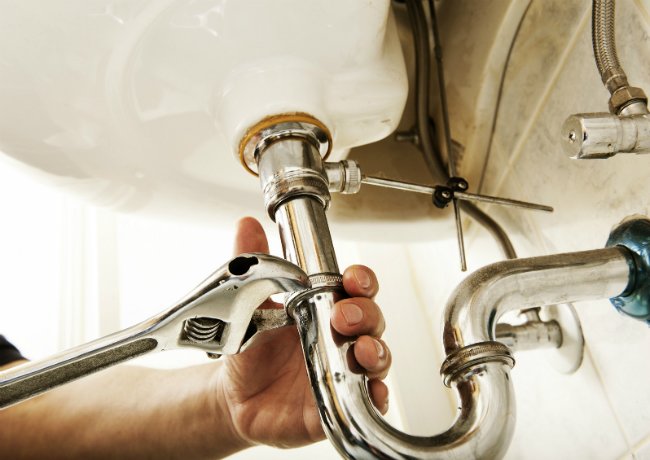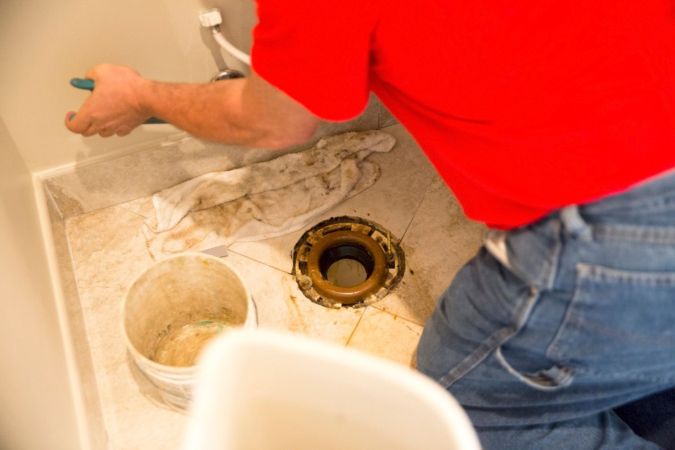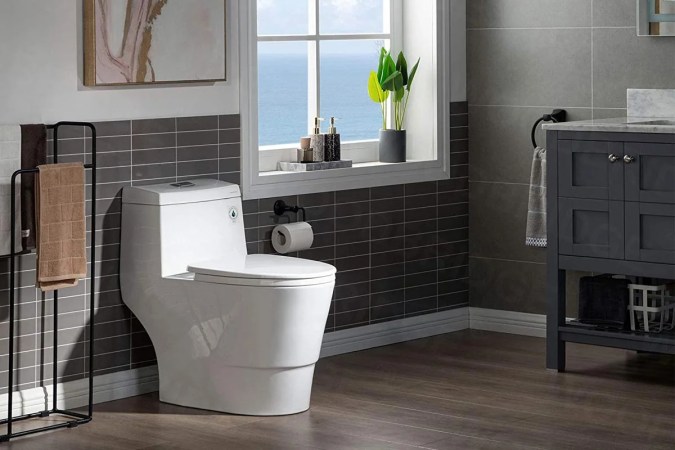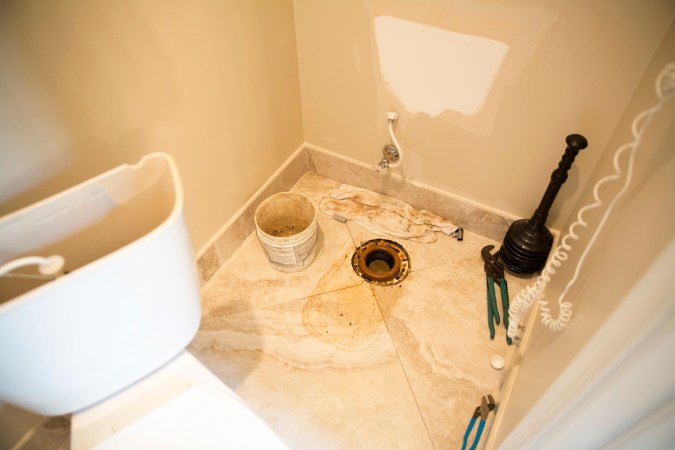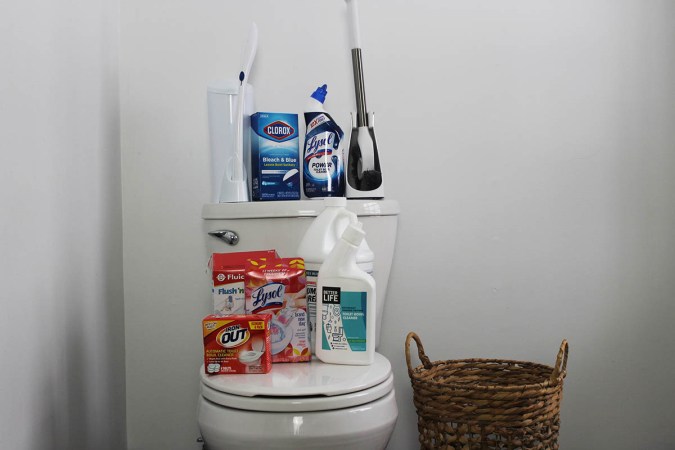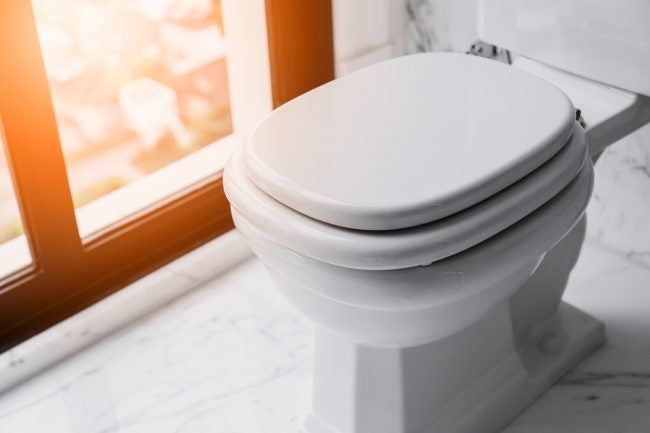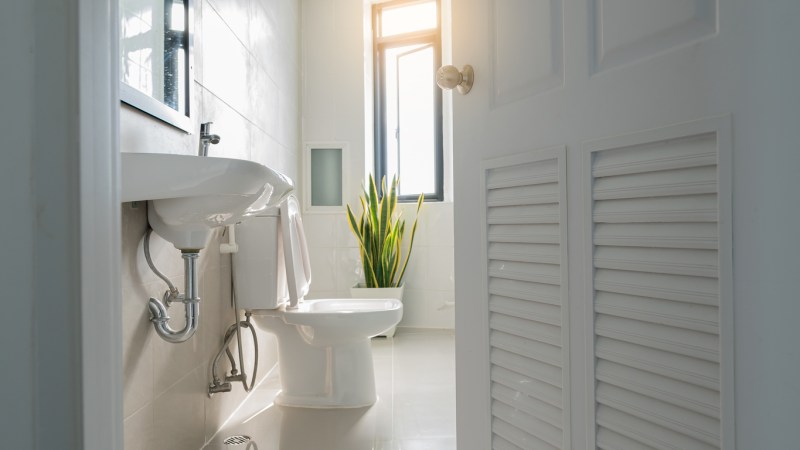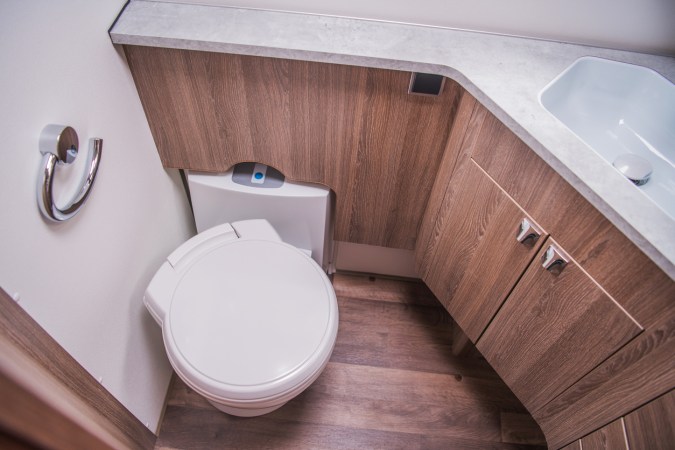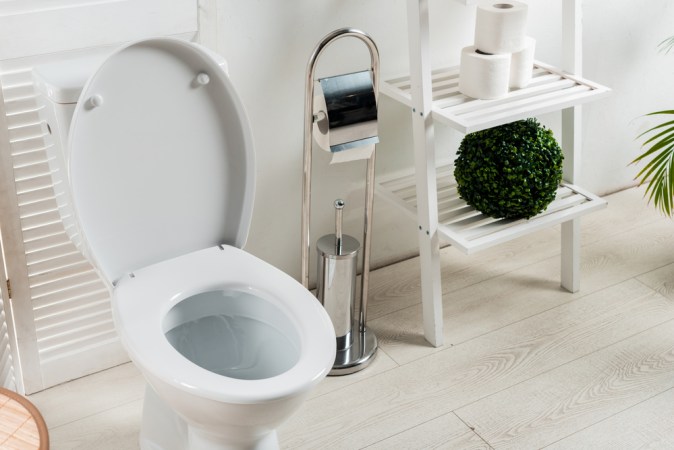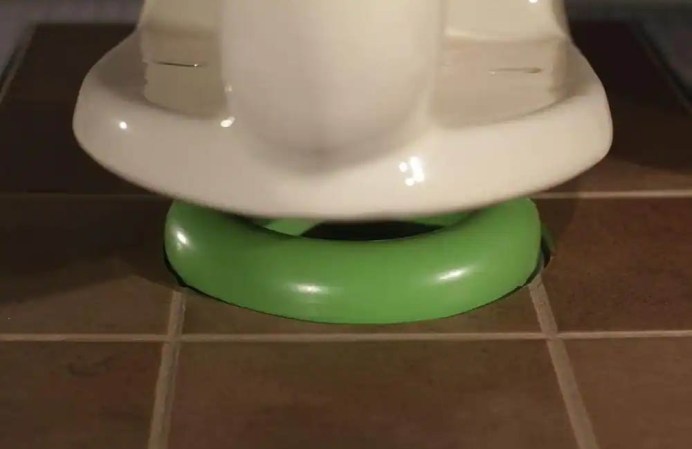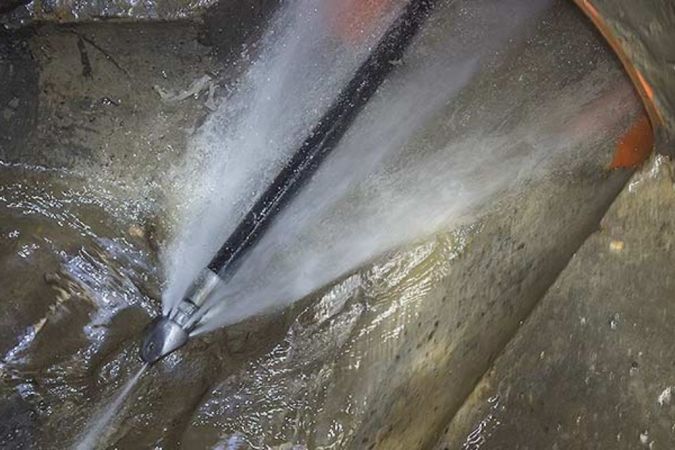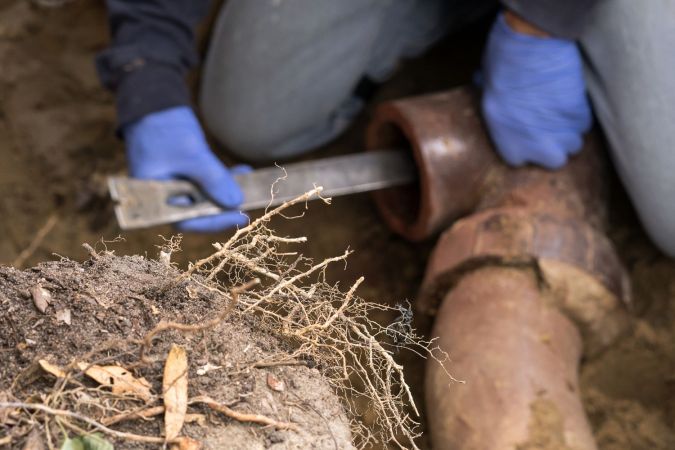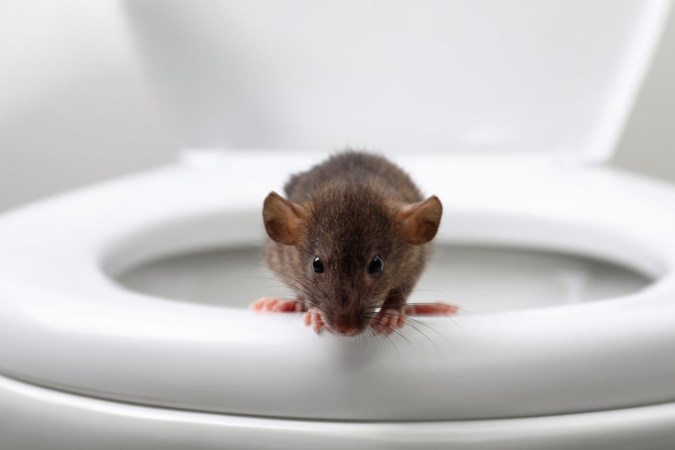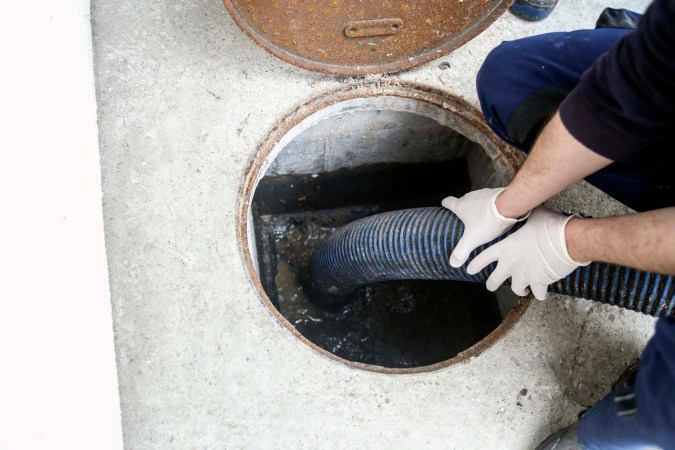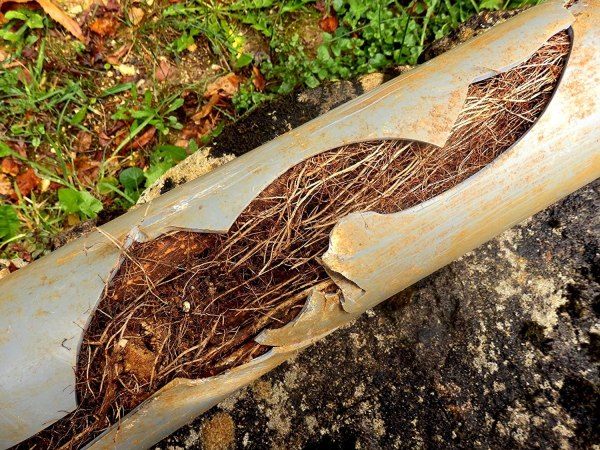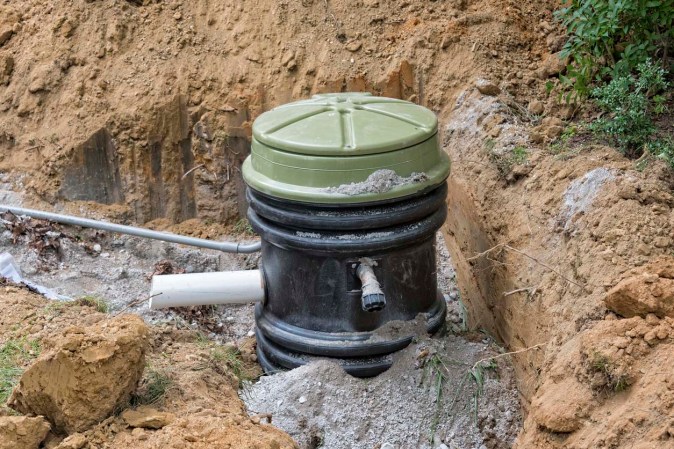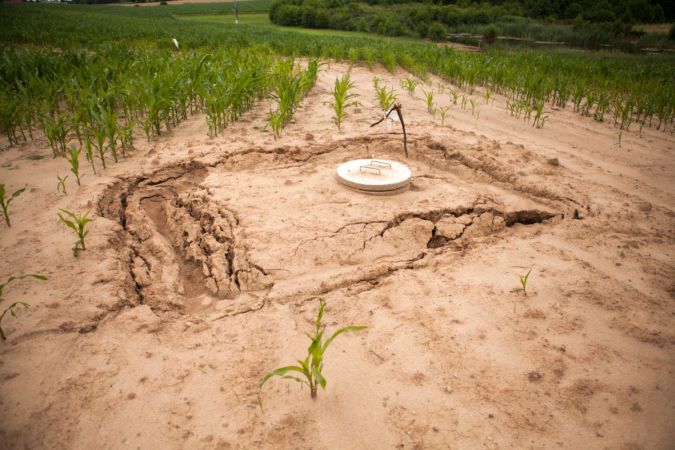We may earn revenue from the products available on this page and participate in affiliate programs. Learn More ›
While a noxious odor in the bathroom might be harmless, an unusual bad odor that smells truly rotten should never be ignored.
“The biggest mistake I see homeowners make is ignoring it or covering it with air fresheners and forgetting about it,” says Chuck Pound, virtual plumbing expert and master plumber at Frontdoor, an app that connects homeowners to skilled tradespeople. “While it is a bad odor, it can also be sewer gasses that are harmful to you and your family.”
Prolonged exposure to sewer gasses can cause nausea, dizziness, and, in the case of hydrogen sulfide poisoning, even death. Extreme buildup can trigger an explosion. What’s more, airborne pathogens can creep in when the seal that keeps out sewer gasses has been breached, leaving you vulnerable to sewer-dwelling germs.
Before you start sniffing around to find the source of the problem, be sure to slip on an N95 mask so you don’t breathe in toxic fumes.
Why does my bathroom smell like sewage?
The first step to finding out why a bathroom smells like sewage is to identify the source of the odor. Once that’s done, it will be easier to find the cause of the sewer smell in bathroom fixtures, and then fix the problem so the bathroom smells normal again.
“There are several things that can cause sewage smells,” says Pound. “Some of the more common reasons are a rocking toilet venting sewer gas from the base due to a bad wax ring, a fixture that has not been run in a while that is venting sewer gasses, or stagnant water from a leak in an unseen area of the bathroom.”
The following are some common causes of sewage smells in the bathroom, and the best ways to fix them.
1. The shower drain is clogged.
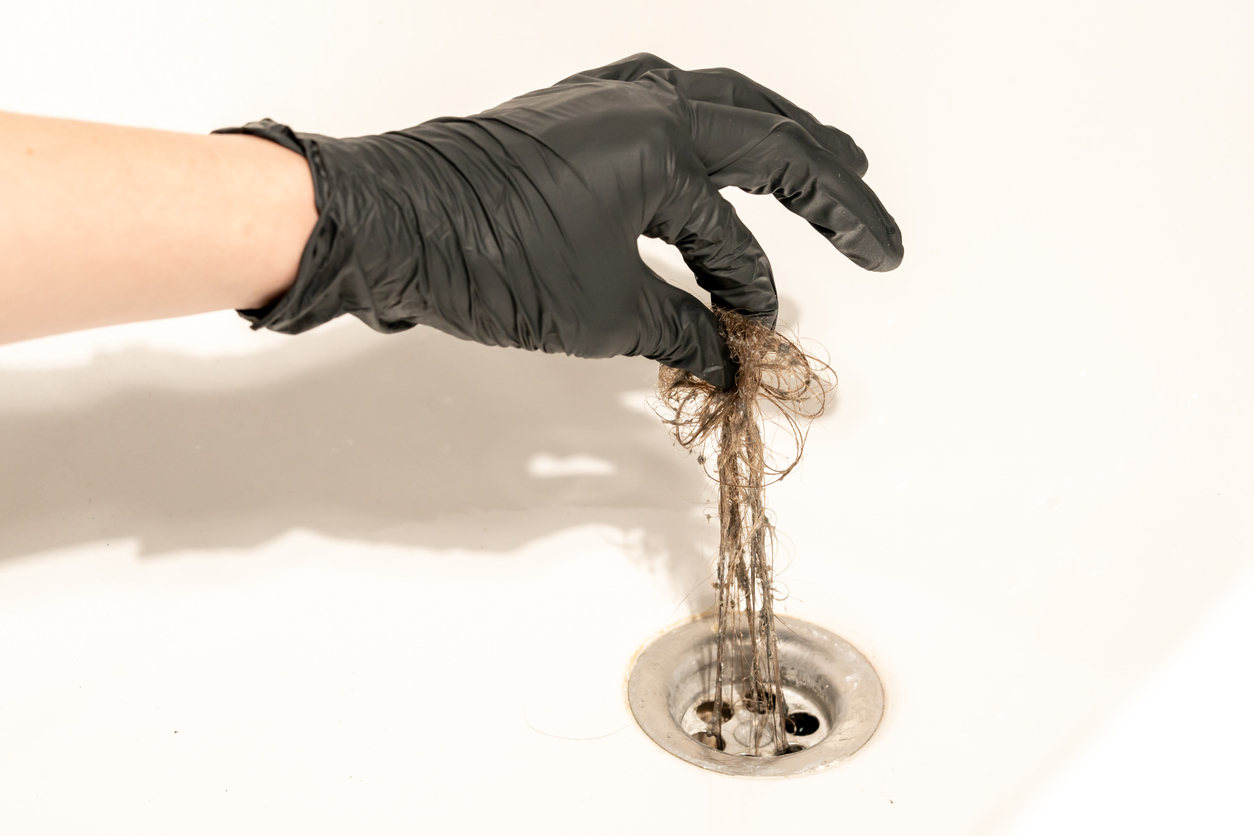
If the water isn’t draining normally in the shower, there could be a clog that’s causing an unpleasant scent. The good news is that it’s fairly easy to unclog a shower. There’s probably just hair and soap causing a slow flow.
If that’s the case, reach for a pair of gloves and a mask. In a bowl, mix ⅓ cup each of baking soda and vinegar, and pour it down the drain. Wait about an hour, and then run the water. If this didn’t fix it, consider using a chemical drain cleaner.
2. The P-trap is dry.
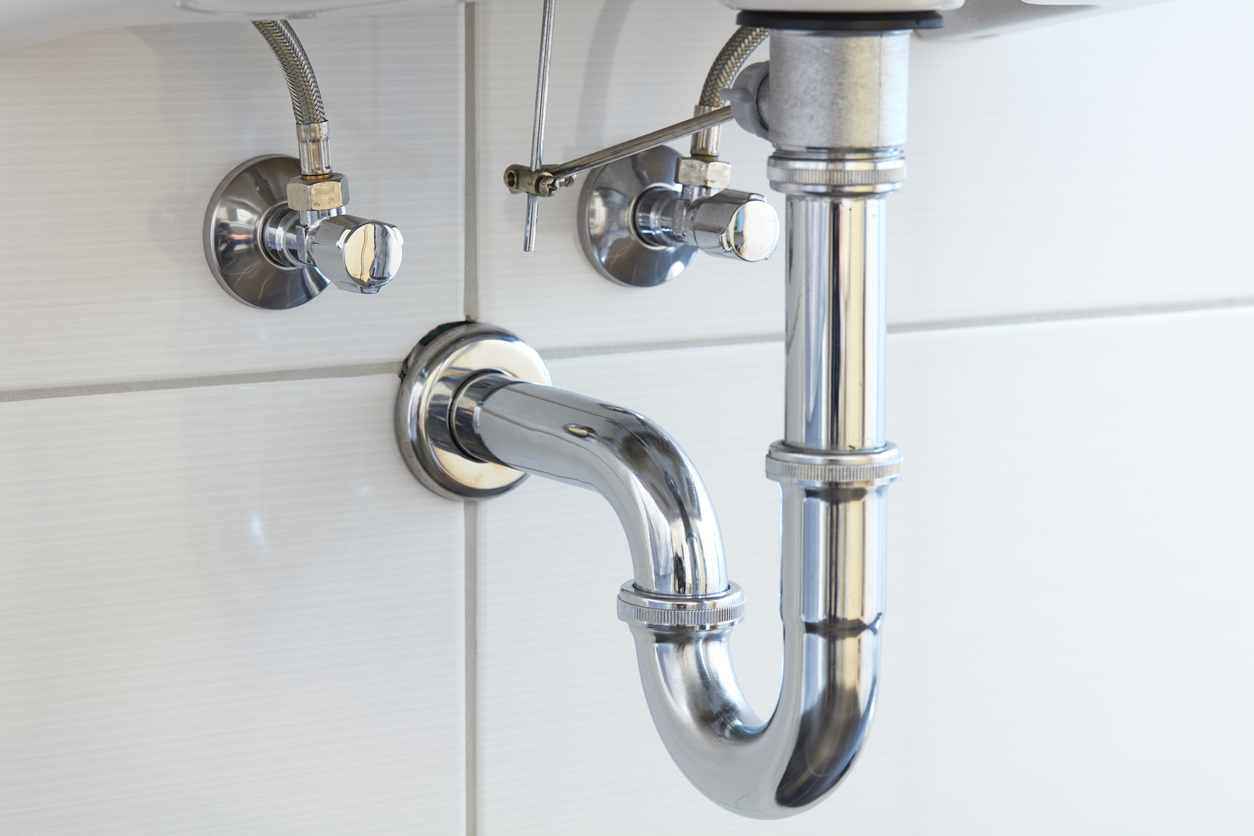
If there’s a sewer smell in bathroom sinks, the problem could be the P-trap. Normally, a small amount of water collects inside the P-trap, even when it’s not in use, capturing sewer gasses that would otherwise sneak up through the drain opening. But if the water in the P-trap dribbles out and leaves the interior of the pipe dry, those gasses will escape and linger in the air.
When that happens, the washers may have corroded and created a small breach. If that’s the case, you can replace them and reinforce your work with plumber’s tape to ensure a good seal. If you can’t identify the issue, then it’s time to call a pro.
“Every plumbing fixture that connects to the house sewer system will have a P-trap in it that needs to be kept full of water,” says Pound. “A sink drain can go dry in under 30 days, leaving a direct path for sewer gasses.”
3. The wax seal around the base of the toilet is broken.
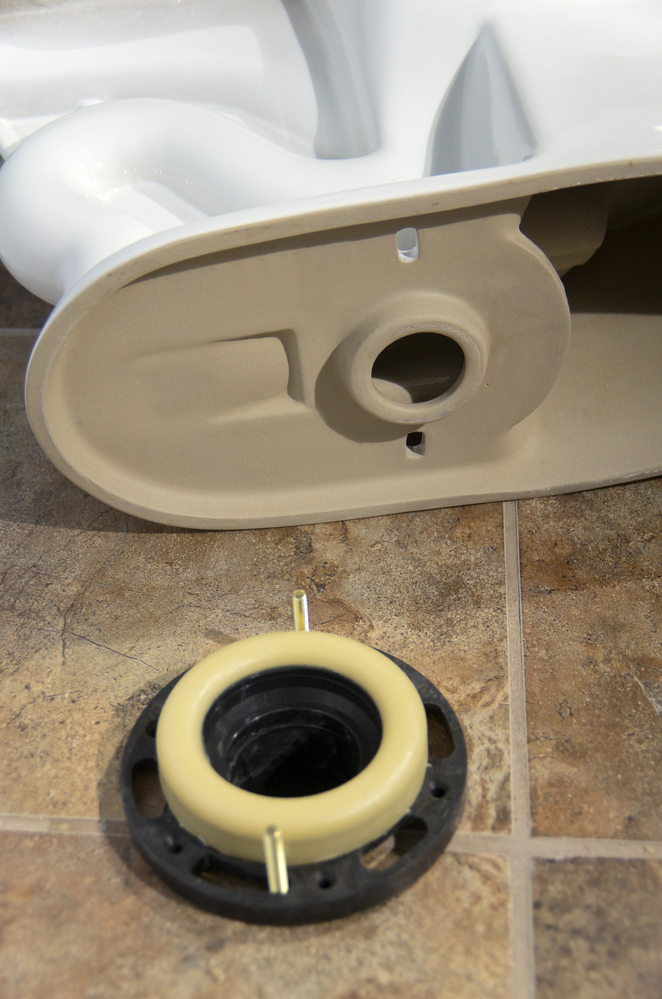
If the toilet smells like sewer stench, there may be a broken wax ring where the toilet meets the floor—a situation that you can detect by observing how much water remains in the bowl between uses. When there isn’t sufficient water for a flush, you could very well have a leaky seal that has unsettled your commode and let sewer gas seep into the room, which is both unsanitary and unsafe.
Replacing a wax ring on a toilet is a job for an experienced DIYer or a pro. It’s essential to buy the right size wax ring and empty the tank before starting this project. Find the steps to replacing a toilet’s wax ring here.
4. The sewer line is backed up.
A backup of the sewer line is no joke. It can cause an overwhelming and potent sewer gas smell in bathrooms that can be dangerous. Never stay in a home that has a sewer backup, even if you think the smell is tolerable.
If you know the cause of the bathroom smell is a sewer backup, fixing it isn’t a DIY job. Since it can be caused by tree roots or pipes that are deteriorating, the repair may be the responsibility of the municipality.
5. There’s bacteria overgrowth in your bathroom.
Bacteria can grow anywhere there’s a warm and moist environment, so the bathroom is a playground for them. Regularly cleaning the bathroom can keep bacteria from taking over and causing a noxious odor.
6. The septic tank is full.
For those who have a septic tank and know it’s about time to drain it, that sewer smell is probably coming from the tank. Sometimes the odor is also accompanied by a gurgling sound and slow-moving toilet flushes.
7. Your bathroom vent pipes are broken or clogged.
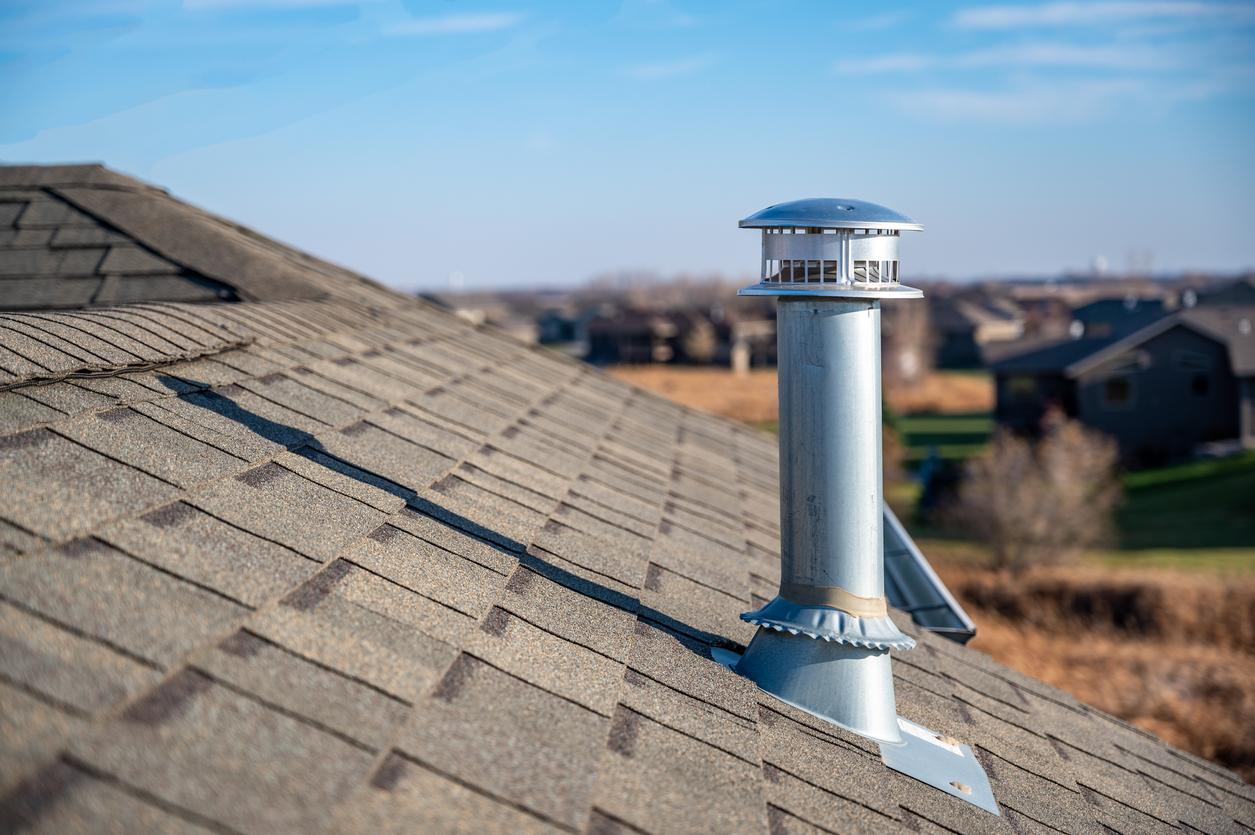
Clogged or incorrectly installed vent pipes could be the source of a sewer smell in the bathroom. These pipes conduct sewer gasses out of your home, and fixing them would require specialized equipment and a trip up to the roof. If the vent pipes are involved, tracking down the source of the odor and remedying the problem is a job best left to a professional.
When to Call a Professional
While some of the causes of sewer smells can be fixed with simple DIY efforts, there are others that are best left to a professional. If you can’t identify the source or the cause of the odor, it’s best to close any ducts in the room, shut the door, and call a plumber for help. If you know there is a sewage backup in your home, find a place for your family and pets to stay until it’s been resolved.

